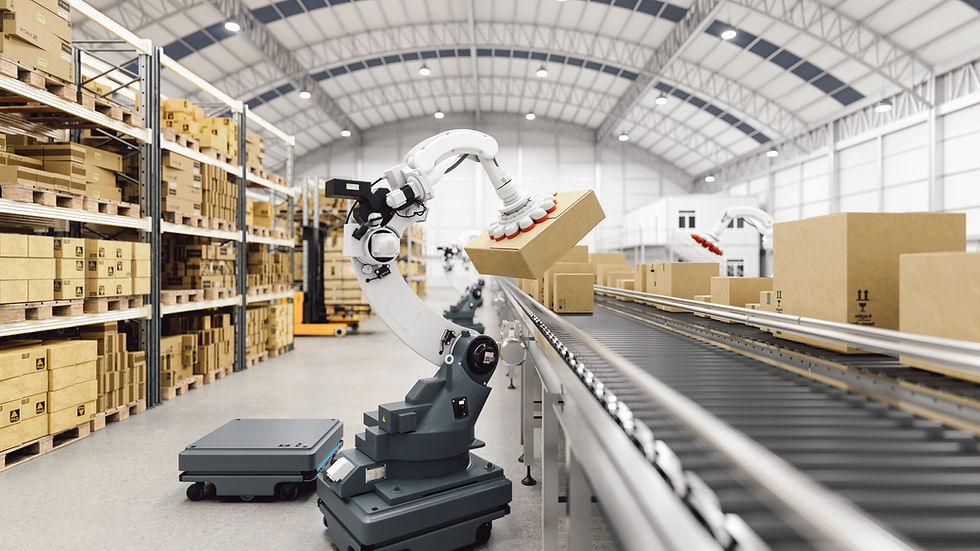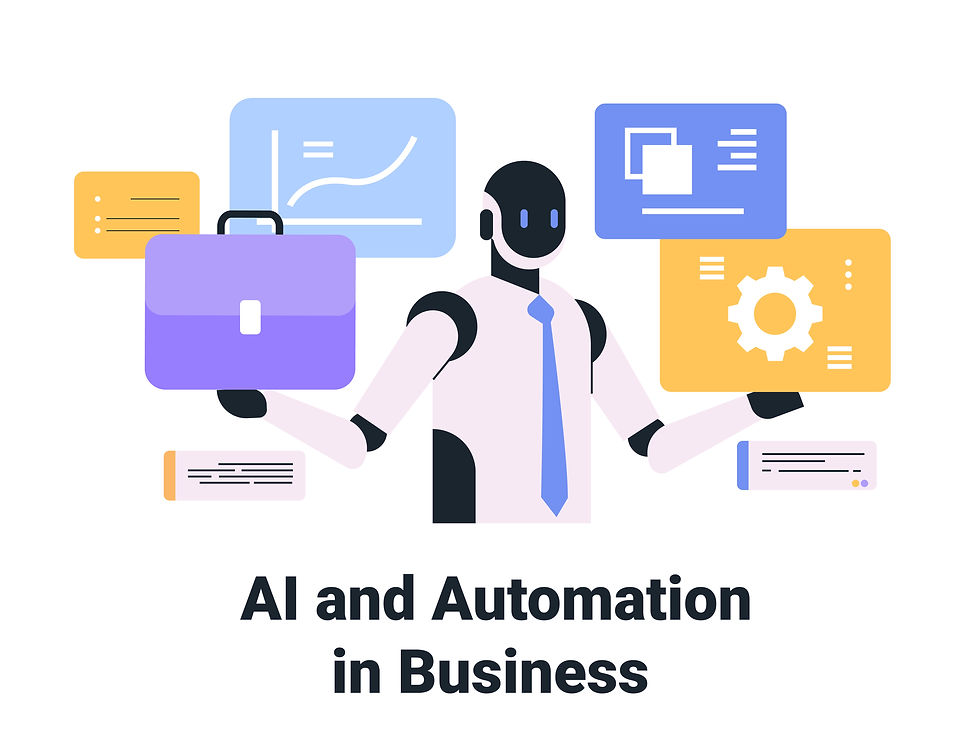How Traditional Businesses Can Achieve Digital Transformation Through AI and Automation
- Patrick Wong

- Aug 13
- 4 min read
In today’s fast-changing business environment, traditional companies often face similar challenges: heavy reliance on manual labor, a lack of standardized workflows, and outdated systems that are difficult to integrate with new technologies. These pain points not only affect efficiency but also limit competitiveness.
Digital transformation has become a necessity for long-term growth, and AI along with automation tools are key to breaking through these bottlenecks. As a professional consulting team, CC Concept helps traditional enterprises quickly optimize workflows, cut costs, and boost operational performance through the right technology solutions.

1. Pain Points in Traditional Businesses (Detailed Analysis)
The problems faced by traditional companies are not just about old systems—it’s about a significant gap between business operations and the level of digitization. Here are the most common pain points we encounter across industries, with real-life scenarios:
1. Heavy Reliance on Manual Processes
Daily operations still depend heavily on human intervention—from handling paperwork, compiling data, to internal communication and task assignment, all done manually.
Example Scenarios:
HR Department: Shift schedules are manually created in Excel. Any employee leave or overtime request means re-editing the file and manually notifying colleagues via email or WhatsApp. This is time-consuming, error-prone, and lacks real-time updates.
Accounting Department: Month-end closing requires manually entering hundreds of invoice records, double-checking amounts and line items, wasting time and increasing the chance of omissions.
Customer Service: Complaints and inquiries are scattered across emails, paper notes, and verbal reports—making it difficult to track progress, causing delays or duplicate responses.
This reliance on manual processes burns staff time and prevents the company from gaining a real-time view of operations.
2. Lack of Standardized Workflows
Even when systems exist, many companies haven’t formalized their workflows. As a result, every employee uses their own approach, leading to inconsistent efficiency and quality.
Example Scenarios:
Procurement: Different buyers use different templates—some send purchase orders via email, others log them on paper. Data collection is inconsistent, making it hard to track procurement progress.
Onboarding: Some departments prepare accounts, equipment, and training plans before the employee starts; others only begin after day one—slowing the onboarding process.
Production Scheduling: Task assignments rely on experienced staff giving verbal instructions. If the key person is absent or leaves, operations quickly become disorganized.
Without standardized processes, companies struggle with efficiency, training costs, and smooth handovers.
3. Outdated Systems & Technology Gaps
Many companies still run decade-old systems with outdated interfaces, limited functions, and no ability to integrate with modern cloud services or APIs.
Example Scenarios:
Sales teams have to record data in both the old system and Excel because the system cannot auto-export reports.
Warehouse systems can’t sync inventory with e-commerce platforms, forcing staff to manually check and update quantities—resulting in delays and errors.
Maintenance costs are high, and it’s hard to find developers familiar with the legacy system. A breakdown can take weeks to fix.
4. Low Data Utilization
Many traditional companies have large volumes of historical data but lack the tools and skills to leverage it.
Example Scenarios:
A retail company with 10 years of sales records can only use the system for order lookups—there’s no trend analysis, customer segmentation, or data-driven marketing.
A service company has a complete log of customer complaints but no automatic classification or analysis, so recurring problems remain unresolved for years.
Data is siloed by department, with no integration, preventing a unified operational view.
2. How AI and Automation Can Transform Operations
1. Workflow Automation
Tools: n8n, Make.com, Zapier
Low-code / no-code platforms can connect different systems and automate tasks, such as:
Automatically adding form data to CRM
Sending order confirmations to relevant teams
Auto-generating and sending reports
2. RPA (Robotic Process Automation)
Tools: UiPath
RPA simulates human actions to handle repetitive tasks, including:
Extracting data from legacy systems and importing into new platforms
Logging into multiple systems to update records
Processing and classifying large volumes of documents
3. AI Agents
AI Agents can execute preset tasks and make contextual decisions, such as:
Auto-classifying and responding to customer emails
Generating business recommendations based on data analysis
Creating marketing content or social media drafts
3. CC Concept’s Consulting Process
Phase 1: Needs Exploration & System Review
Analyze workflows and identify pain points
Assess system architecture, data flow, and tech limitations
Provide initial automation and AI adoption directions
Deliverable: Preliminary evaluation report & technology roadmap
Phase 2: System Audit & Technical Assessment
Audit current systems for security, performance, scalability
Check data privacy & compliance
Develop a practical digital transformation plan
Deliverable: Full audit report & optimization proposals
Phase 3: Automation & AI Deployment Design
Build automation prototypes (PoC)
Design AI applications and select appropriate tech stacks
Create an implementation timeline and resource plan
Deliverable: Deployment blueprint & pilot systems
Phase 4: Implementation & Continuous Optimization
Deploy automation workflows & AI models
Monitor performance and system stability
Continuous optimization and training for internal teams
Deliverable: Optimized workflows & data-driven decision-making capability
4. The Value of Digital Transformation
Cost Savings: Reduce repetitive manual work, lowering labor costs
Efficiency Boost: Automation shortens processing times
Competitive Advantage: AI enables faster, more accurate decisions
Security & Compliance: Ensure systems and data management meet regulations
5. Conclusion
AI and automation are no longer futuristic—they are essential tools for boosting efficiency and competitiveness. With CC Concept’s consulting services, companies can rapidly assess their systems, implement automation, and continuously refine operations.
In the digital era, companies that embrace proactive transformation will lead the market.





Comments